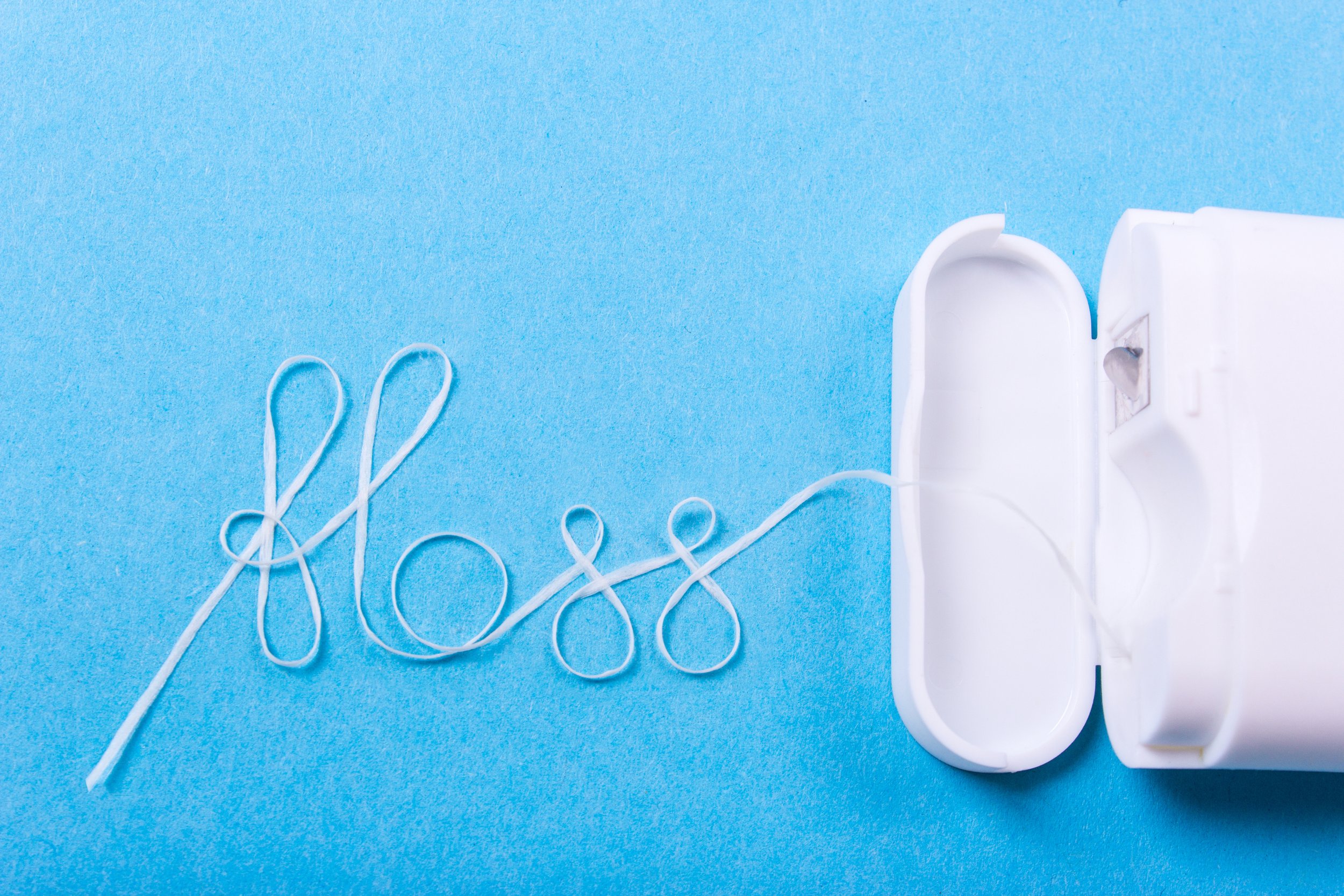Image courtesy of Adobe Stock.
Good oral hygiene is essential for maintaining a bright smile and preventing dental issues. One often overlooked yet crucial aspect of oral care is dental floss. In this comprehensive blog post, we'll explore the history, importance, proper usage, and various types of dental floss, along with their pros and cons. We'll also delve into the technique of flossing under a bridge using superfloss. Whether you're a seasoned flosser or a newbie, read on to enhance your oral hygiene routine.
The Historical Thread of Dental Floss
Dental floss, an unassuming but remarkable tool, has a history that dates back centuries. Ancient civilizations, such as the Egyptians and Chinese, used rudimentary forms of dental floss made from silk threads and horsehair to clean between teeth. However, it wasn't until the early 19th century that dental floss as we know it today began to take shape.
In 1815, an American dentist named Dr. Levi Spear Parmly introduced the concept of using silk thread for dental cleaning. He recommended this practice to his patients and even published a book titled "A Practical Guide to the Management of Teeth," which emphasized the importance of interdental cleaning with silk floss. Dr. Parmly's work laid the foundation for the modern dental floss we use today.
The Importance of Dental Floss
Now, let's explore why dental floss is crucial for your oral health:
1. Plaque and Food Particle Removal: Toothbrushes do an excellent job of cleaning the surfaces of your teeth, but they can't reach between them. Dental floss, with its thin and flexible design, can access these tight spaces to remove trapped food particles and plaque.
2. Prevention of Gum Disease: When food particles and plaque accumulate between teeth, they can lead to gum inflammation and ultimately gum disease. Regular flossing helps prevent these issues by keeping these areas clean.
3. Cavity Prevention: By removing food particles and plaque, dental floss also reduces the risk of cavities. Cavities often develop in areas where brushing alone can't effectively reach.
Types of Dental Floss and Their Pros and Cons
There are several types of dental floss available, each with its own set of advantages and disadvantages. Choosing the right one depends on your personal preferences and needs:
1. Waxed Dental Floss:
- *Pros:* Waxed floss glides more easily between teeth, making it a popular choice for those with tightly spaced teeth.
- *Cons:* The waxed coating may contain artificial additives, and some people find it shreds more easily than unwaxed floss.
2. Unwaxed Dental Floss:
- *Pros:* Unwaxed floss is a natural option without any added chemicals or flavors. It's durable and less likely to shred.
- *Cons:* It can be harder to slide between teeth, especially if they are close together.
3. Flavored Dental Floss:
- *Pros:* Flavored floss can make the flossing experience more enjoyable and leaves a pleasant taste in your mouth.
- *Cons:* Some flavored flosses may contain artificial sweeteners or additives, which may not be suitable for everyone.
4. Dental Tape:
- *Pros:* Dental tape is wider and flat, making it ideal for people with larger gaps between their teeth.
- *Cons:* It may not fit comfortably between tightly spaced teeth and can be less effective at removing plaque in these areas.
Flossing Under a Bridge Using Superfloss
For individuals with dental bridges or orthodontic appliances, traditional flossing can be challenging. Superfloss, a specialized type of dental floss, is designed to address this issue. Here's how to use superfloss effectively:
1. Select Superfloss: Superfloss consists of three distinct sections:
- A stiffened end: This end helps thread the floss under the bridge.
- Spongy, fluffy floss: Use this part to clean between the natural teeth.
- Regular floss: The last section is for flossing between natural teeth.
2. Thread Under the Bridge: Gently guide the stiffened end of the superfloss under the dental bridge, ensuring it passes through the gap between the bridge and the gums.
3. Clean Between Natural Teeth: Once the superfloss is under the bridge, use the spongy, fluffy floss section to clean between your natural teeth.
4. Floss the Remaining Teeth: After addressing the bridge, continue flossing your remaining natural teeth using the regular floss section of superfloss.
Why Other Adjuncts Fall Short
While dental floss is a tried-and-true method for interdental cleaning, other adjuncts like mouthwash rinses and water picks can't fully replace it. Here's why:
1. Mouthwash Rinses: Mouthwash can help freshen breath and kill bacteria in the mouth, but it can't physically remove food particles and plaque stuck between teeth. It's a useful addition to your oral hygiene routine but should not replace flossing.
2. Water Picks: Water picks use a stream of water to dislodge debris between teeth. While they can be helpful, they may not be as effective as floss in removing sticky plaque. Additionally, they can be less portable and more expensive than traditional floss.
3. Flossing Aids: Tools like floss picks or pre-threaded flossers may seem convenient, but they may not provide the same control and precision as traditional floss. They can also generate more plastic waste.
In conclusion, dental floss is a remarkable invention with a rich history that continues to be a cornerstone of good oral hygiene. Regular flossing, when done correctly, can significantly contribute to gum health, cavity prevention, and overall oral well-being. When choosing a type of dental floss, consider your personal preferences and needs. For those with dental bridges, superfloss is a valuable tool to ensure thorough cleaning between the teeth and the bridge. While other adjuncts have their merits, they should complement, not replace, the timeless practice of dental flossing. So, remember to include flossing in your daily oral care routine for a healthier and brighter smile.
